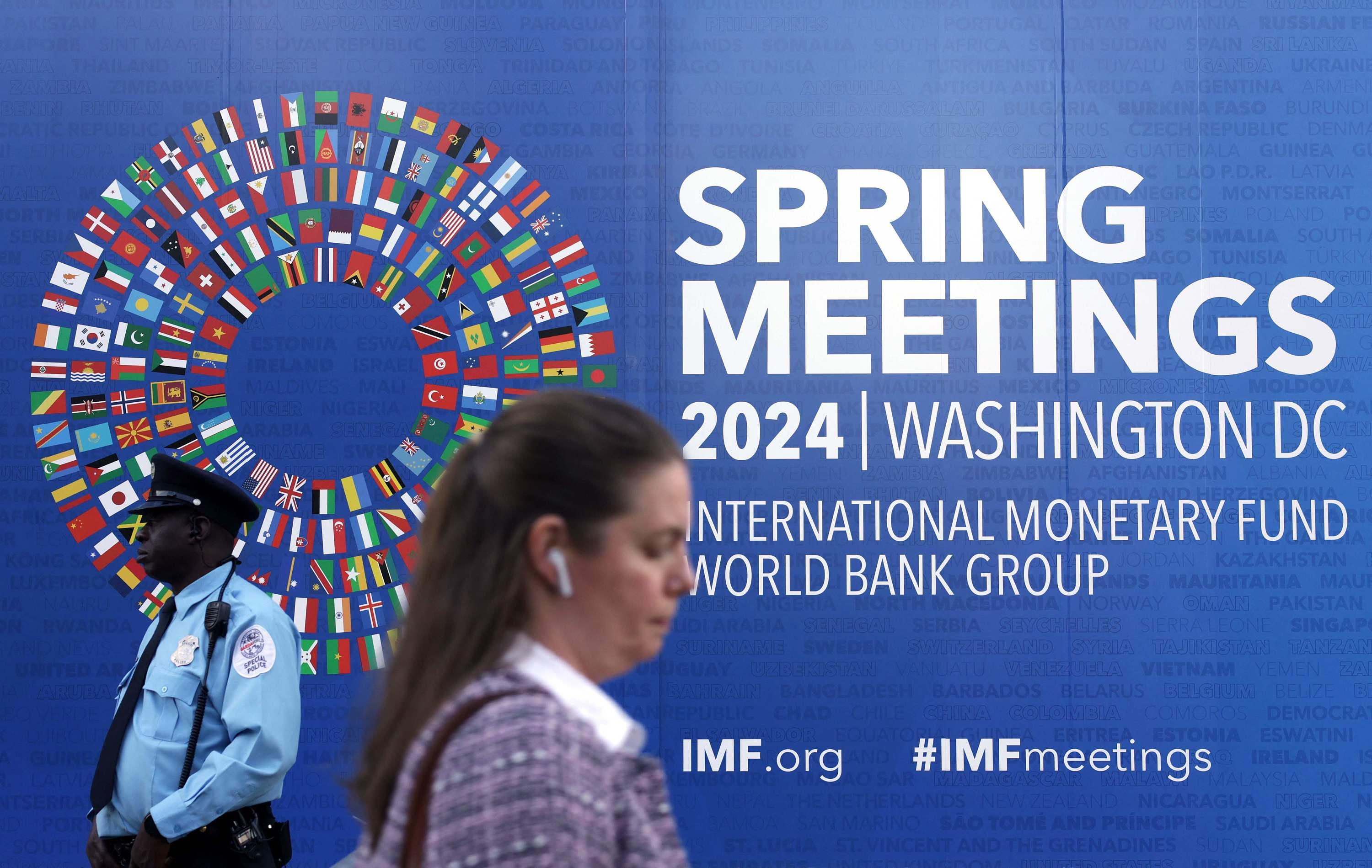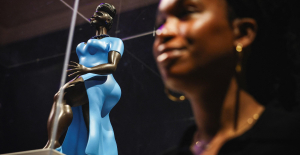The action remained secret until it was successfully completed. At around 8:50 a.m. on February 10, 1962, two men walked past each other on the Glienicke Bridge in the extreme south-west of Berlin. The 58-year-old Rudolf Ivanovich Abel (1903-1971) walked in the direction of Potsdam, i.e. GDR; traveling in the opposite direction to West Berlin was Francis Gary Powers (1929–1977), a 32-year-old CIA pilot.
But Abel was much more valuable - you could see that from the fact that two other prisoners were released by the Eastern Bloc secret services in exchange for him, although not on the Glienicker Bridge that morning. In fact, he was the highest-ranking Soviet spy to be arrested in the West up to that point. He also had the biography of a flawless communist revolutionary.
Abel's parents both came from Russia, his father was of German descent, but they had their children in northern England. Rudolf, born in 1903, turned out to be extremely clever and gifted in languages – he passed the entrance exam at the University of London at the age of 16, but was unable to study for lack of money.
Instead, the family emigrated to the newly formed Soviet Union - Abel's father had an old acquaintance with the revolutionary leader Vladimir Lenin. Rudolf, who spoke fluent English, German, Russian and Polish, as well as Yiddish, made a career in the espionage business. Luckily, he escaped prosecution during Stalin's "Great Purges," but had to resign from the Secret Service. He did not return to the KGB until 1946, and two years later he entered the United States under an assumed name. His task: to set up an extensive espionage network, aimed primarily at the secrets of the US nuclear program.
Under a false name, Abel set up an apartment in Brooklyn in 1950 and worked as a photographer. Most importantly, he operated several hidden radio stations in the eastern, northern and even western United States, collecting and relaying information from his agents. He had long been the central figure in Soviet foreign espionage.
However, the FBI had been on his trail since 1953, when a nickel that had been hollowed out for microfilm had accidentally been used as change. At the end of April 1957, his assistant was called to Moscow “to report” – fearing punishment by the KGB, he turned himself in to the US Embassy in Paris. Abel went into hiding under the false identity of "Martin Collins", but was located in Brooklyn at the end of May and was under constant surveillance from June 13, 1957. Six days later, the FBI intervened and arrested him.
Initially, the reason for detention was only his false passport. But in the course of the investigation, the entire spy ring was dug up. Abel expected the death penalty, but his defense attorney, who worked for the CIA's predecessor OSS during World War II, argued: "You can't exchange a dead spy." The court imposed a 30-year prison sentence.
Four and a half years later the time had come: Abel was exchanged for Powers, who had been shot down in 1960 with his U-2 spy plane over the Soviet Union. The top spy returned to the Soviet Union, where he spent a comparatively luxurious retirement as a respected KGB veteran. In 1971, heavy smoker Rudolf Abel died of lung cancer in Moscow.
You can also find "World History" on Facebook. We are happy about a like.
This article was first published in February 2021.

 Knife attack in Australia: who are the two French heroes congratulated by Macron?
Knife attack in Australia: who are the two French heroes congratulated by Macron?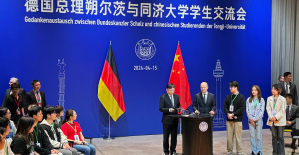 Faced with an anxious Chinese student, Olaf Scholz assures that not everyone smokes cannabis in Germany
Faced with an anxious Chinese student, Olaf Scholz assures that not everyone smokes cannabis in Germany In the Solomon Islands, legislative elections crucial for security in the Pacific
In the Solomon Islands, legislative elections crucial for security in the Pacific Sudan ravaged by a year of war
Sudan ravaged by a year of war Covid-19: everything you need to know about the new vaccination campaign which is starting
Covid-19: everything you need to know about the new vaccination campaign which is starting The best laptops of the moment boast artificial intelligence
The best laptops of the moment boast artificial intelligence Amazon invests 700 million in robotizing its warehouses in Europe
Amazon invests 700 million in robotizing its warehouses in Europe Inflation rises to 3.2% in March due to gasoline and electricity bills
Inflation rises to 3.2% in March due to gasoline and electricity bills Olympic Games-2024: which professions are likely to strike during the competition?
Olympic Games-2024: which professions are likely to strike during the competition? Pizzas sold throughout France recalled for “possible presence” of glass debris
Pizzas sold throughout France recalled for “possible presence” of glass debris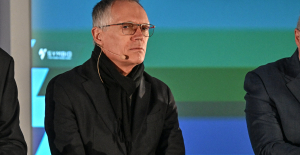 “As for a football player, there is a contract”: Carlos Tavares defends his remuneration of 36.5 million euros
“As for a football player, there is a contract”: Carlos Tavares defends his remuneration of 36.5 million euros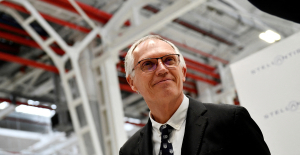 Stellantis: shareholders validate the controversial remuneration of Carlos Tavares
Stellantis: shareholders validate the controversial remuneration of Carlos Tavares Dune 3 will be the last film of Denis Villeneuve's adaptation
Dune 3 will be the last film of Denis Villeneuve's adaptation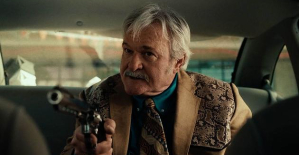 Shane Atkinson, humble disciple of the Coen brothers
Shane Atkinson, humble disciple of the Coen brothers Outcry from publishers against the authorization of advertising for books on television
Outcry from publishers against the authorization of advertising for books on television Eddy de Pretto celebrates his “last party too many” at the Olympia
Eddy de Pretto celebrates his “last party too many” at the Olympia Skoda Kodiaq 2024: a 'beast' plug-in hybrid SUV
Skoda Kodiaq 2024: a 'beast' plug-in hybrid SUV Tesla launches a new Model Y with 600 km of autonomy at a "more accessible price"
Tesla launches a new Model Y with 600 km of autonomy at a "more accessible price" The 10 best-selling cars in March 2024 in Spain: sales fall due to Easter
The 10 best-selling cars in March 2024 in Spain: sales fall due to Easter A private jet company buys more than 100 flying cars
A private jet company buys more than 100 flying cars This is how housing prices have changed in Spain in the last decade
This is how housing prices have changed in Spain in the last decade The home mortgage firm drops 10% in January and interest soars to 3.46%
The home mortgage firm drops 10% in January and interest soars to 3.46% The jewel of the Rocío de Nagüeles urbanization: a dream villa in Marbella
The jewel of the Rocío de Nagüeles urbanization: a dream villa in Marbella Rental prices grow by 7.3% in February: where does it go up and where does it go down?
Rental prices grow by 7.3% in February: where does it go up and where does it go down? Europeans: the schedule of debates to follow between now and June 9
Europeans: the schedule of debates to follow between now and June 9 Europeans: “In France, there is a left and there is a right,” assures Bellamy
Europeans: “In France, there is a left and there is a right,” assures Bellamy During the night of the economy, the right points out the budgetary flaws of the macronie
During the night of the economy, the right points out the budgetary flaws of the macronie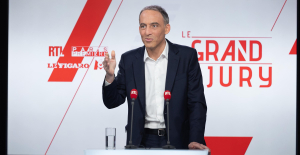 Europeans: Glucksmann denounces “Emmanuel Macron’s failure” in the face of Bardella’s success
Europeans: Glucksmann denounces “Emmanuel Macron’s failure” in the face of Bardella’s success These French cities that will boycott the World Cup in Qatar
These French cities that will boycott the World Cup in Qatar Dortmund-Atlético: two months before the Euro, Griezmann warms up the engine
Dortmund-Atlético: two months before the Euro, Griezmann warms up the engine Football: Bernd Hölzenbein, 1974 world champion, died at 78
Football: Bernd Hölzenbein, 1974 world champion, died at 78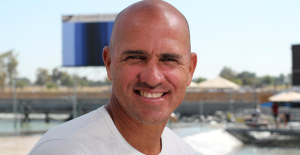 'Everything comes to an end': Surfing legend Kelly Slater moves closer to retirement
'Everything comes to an end': Surfing legend Kelly Slater moves closer to retirement Athletics: the victory of a transgender athlete causes controversy in the United States
Athletics: the victory of a transgender athlete causes controversy in the United States




